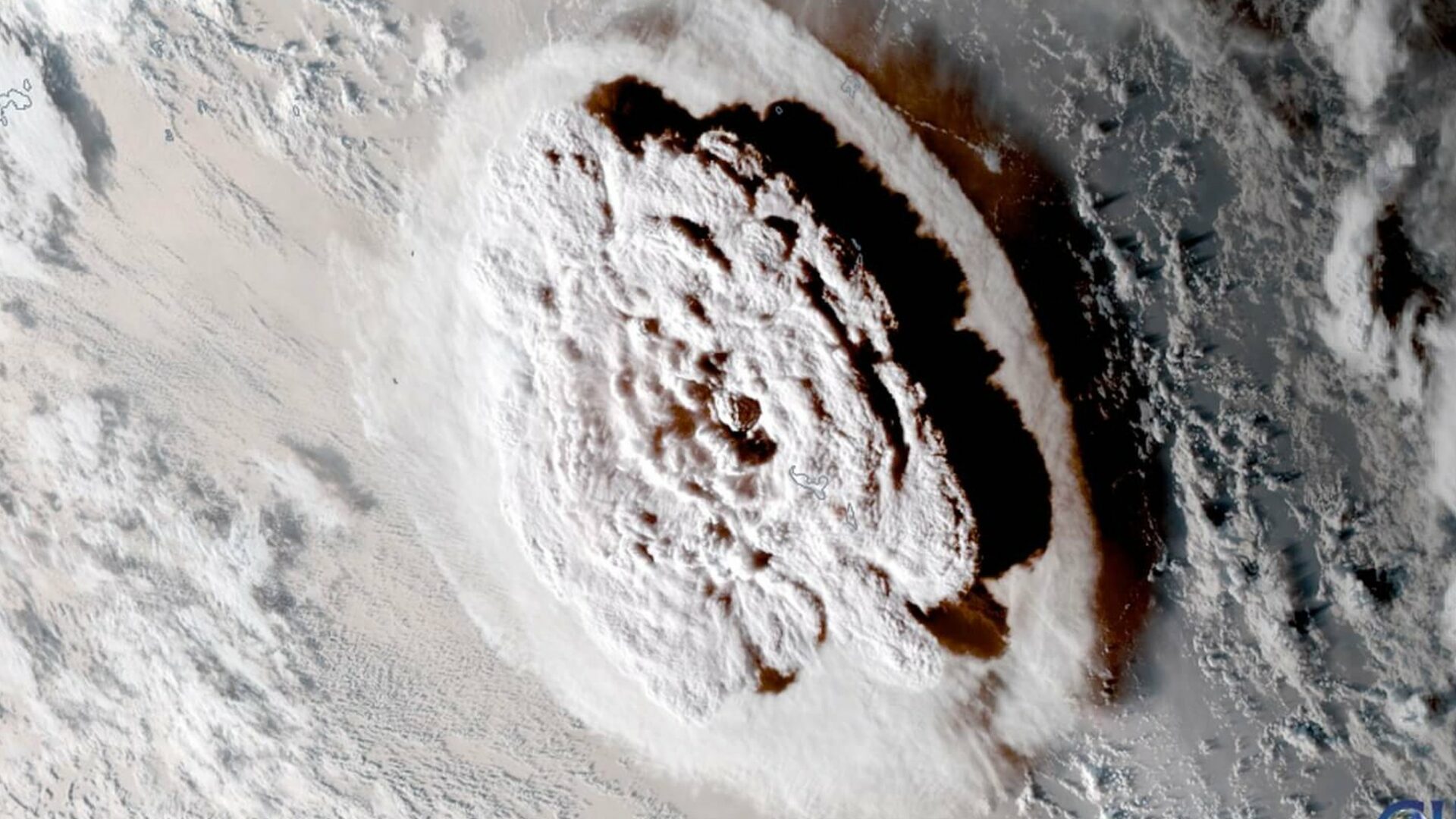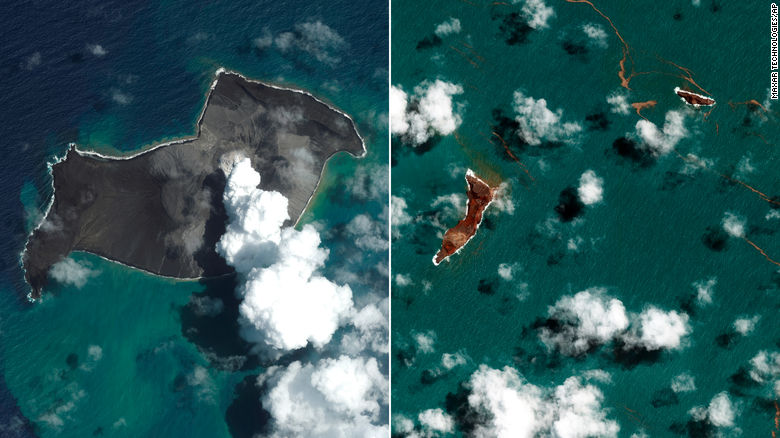Scientists have received impressive footage of the eruption of the underwater volcano Tonga, taken from space. According to the NASA satellite, this eruption was one of the most powerful on the planet and threw such a huge amount of water vapor high into the atmosphere that it temporarily heated the Earth’s surface. The plume of water vapor reached a height of 53 kilometers above the Earth’s surface.

According to NASA satellites, there was enough water to fill 58 thousand Olympic swimming pools, which is 10% of the water that is generally present in the atmosphere. A new study on the discovery of water vapor was published in July in Geophysical Research Letters.
What did NASA Aura see?
The image was taken by the Microwave Limb Sounder instrument on the NASA Aura satellite. The satellite measures water vapor, ozone and other atmospheric gases. After the eruption, scientists were extremely stunned by the obtained indicators. The video even shows how, as a result of the eruption, the volcano created a powerful tsunami, as well as a sonic boom that swept twice around the world.
The eruption of the underwater volcano Hunga Tonga-Hunga Ha’apai occurred on January 15 this year 65 kilometers north of the capital of Tonga. As a result, the island of Hunga Tonga almost completely went under water, losing at least 7% of its area, and the island of Hunga Ha’apai lost about half of its area.

The Aura satellite was launched in 2004, and since then it has recorded only two volcanic eruptions that have raised a significant amount of water vapor so high into the atmosphere. But then the water vapor from the events of Kasatochi in 2008 in Alaska and the Calbuco eruption in 2015 in Chile dissipated quite quickly.
Volcanoes and global cataclysms
As a rule, powerful volcanic eruptions, such as Mount Pinatubo or the Krakatoa event in 1883 in Indonesia, reduce the temperature of the Earth’s surface, as the gas, dust and ash emitted by it reflect sunlight into space. Such events even cause “volcanic winters” that occurred after the eruption of the Tambora volcano in 1815, which provoked the “year without summer” in 1816.
The eruption of Tonga was different, because the water vapor that it released into the atmosphere, on the contrary, retains heat, which entails a global increase in temperature on Earth. According to the researchers, excess water vapor can remain in the stratosphere for several years. An additional amount of water vapor in the stratosphere can lead to chemical reactions that temporarily deplete the Earth’s protective ozone.
Follow us on Twitter to get the most interesting space news in time
https://twitter.com/ust_magazine
